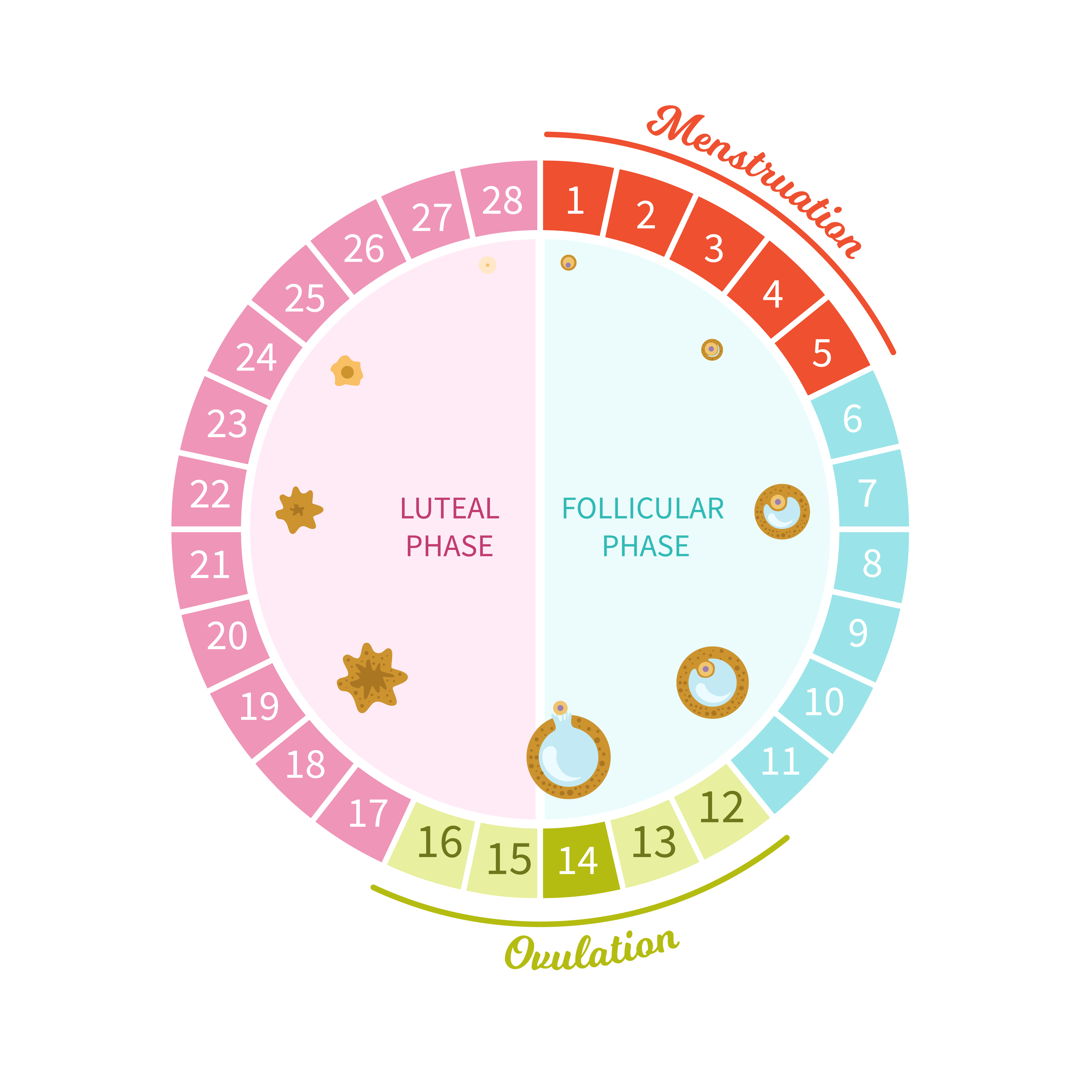
Understanding the Four Phases of Your Menstrual Cycle: A Guide to Hormonal Balance
Understanding your menstrual cycle is the first step toward achieving hormonal balance and overall well-being. Each cycle is divided into four distinct phases (menstrual, follicular, ovulation, and luteal), that influence your physical, emotional, and mental state. By learning how to support your body through each stage, you can improve your health, boost your energy, and feel more in tune with yourself.

The Menstrual Phase: Rest and Reflect
The menstrual phase begins on the first day of your period and lasts for about 3 to 7 days. During this time, your body is shedding the uterine lining, and hormone levels like estrogen and progesterone are at their lowest. This phase is all about rest and reflection. Your body naturally slows down, so it’s important to listen to it and take time for self-care. Gentle activities like yoga, meditation, and warm baths can help ease cramps and promote relaxation. Incorporating iron-rich foods and staying hydrated will support your body’s needs during menstruation.
The Follicular Phase: Rejuvenate and Recharge
The follicular phase starts right after your period ends and continues until ovulation, lasting about 7 to 10 days. During this phase, estrogen levels begin to rise, leading to increased energy, mental clarity, and a positive mood. This is a great time to set new goals, engage in creative projects, and tackle tasks that require focus. Support your body with nutrient-dense foods, including healthy fats, which help fuel your body’s energy production. Physical activities like strength training and cardio are also well-suited to this phase, as your body is primed for exertion. BUT be careful not to exert yourself too much during this phase! Your energy levels are only peaking during ovulation, and if you exhaust yourself now, you will have less energy for the rest of your cycle.
The Ovulation Phase: Connect and Create
Ovulation typically occurs around the middle of your cycle, lasting for about 3 to 5 days. During this phase, the mature egg is released from the ovary, and estrogen levels peak. This phase is associated with heightened energy, confidence, and social connectivity. It’s an ideal time for collaboration, networking, and expressing creativity. Many menstruators feel their best during ovulation, making it a great time to push forward in both personal and professional endeavors; but it's important to note that some feel overwhelmed by this phase, if they have a problem managing their highs or their busy schedule. Nutritional support with protein-rich foods and staying hydrated will help maintain your energy levels. If you’re trying to conceive or avoid pregnancy, this is the most fertile phase of your cycle, so be mindful of your reproductive goals.
The Luteal Phase: Slow Down and Prepare
The luteal phase follows ovulation and lasts until the start of your next period, typically around 10 to 14 days. Progesterone levels rise during this phase, leading to potential symptoms like mood swings, fatigue, and bloating, commonly known as PMS. This is a time to slow down and prepare for menstruation. Focus on activities that promote relaxation and reduce stress, such as gentle stretching, journaling, and mindfulness practices. Supporting your body with magnesium-rich foods and reducing sugar intake can help manage PMS symptoms. Emotional self-care is also crucial, so prioritize activities that bring you comfort and joy.
Not sure which phase you are in? Start tracking!
By understanding and supporting each phase of your menstrual cycle, you can achieve greater hormonal balance and overall well-being. Incorporating these tips into your routine will help you feel more in control of your cycle and experience positive changes in your menstrual health.
You can start tracking your cycles by using my free downloadable cycle tracking sheets. These sheets will help you determine which phase you are in, by looking at how your moods change from the first day of your period to the last day of your cycle. If you want to gain more certainty about when do you tend to be ovulating, you can also start writing down your body temperature. Change in body temperature is a tell-tale sign of ovulation. To read more about the changes in body temperature during your cycle, click here.
